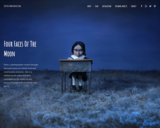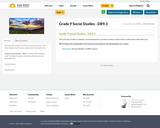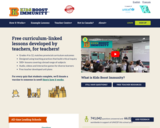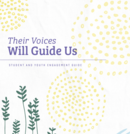
This video shows the impact of the trade in resources, ideas, peoples and diseases between the old world and the new.
- Subject:
- History
- Social Studies
- Material Type:
- Lesson
- Provider:
- Crashcourse
- Date Added:
- 05/21/2018

This video shows the impact of the trade in resources, ideas, peoples and diseases between the old world and the new.

Grade Levels: 7/8
Subject Area: Social Studies, History, First Nations, Métis, and Inuit studies, Geography, Language Arts, Visual Arts
Lesson Overview
Students learn how Aboriginal peoples were impacted by settlement and colonization. Students choose a variety of Indigenous nations and learn aspects of their traditional way of life before settlement/colonization by Europeans.

Book- Four Faces of the Moon: is a short graphic novel adapted from a stop motion animated short film that discusses colonization, residential schools and specifically the slaughter of buffalo and other assimilation tactics.
Website- has the stop motion animated film as well as additional information and resources.

This unit plan includes vocabulary, essential questions, and what students need to know, understand and be able to do.

The Indigenous Voices and Reconciliation learning channel aims to engage learners in discussions about Canada’s colonial history and its impact on Indigenous communities. Explore our collection of films by distinguished Indigenous filmmakers, creators, and allies.

Free Science, Socials Studies and Health lessons developed by teachers to inspire digital-age students in support of UNICEF Canada!
All our content is free for teachers!
KBI provides a unique and tailored interactive classroom experience that is carefully curated to follow the school curriculum. In particular, our focus is on meeting the learning standards of the grade 5-12 curriculum in science and social studies that relate to:
The immune system, Disease transmission, Immunization, Pandemics, epidemics, and outbreaks; Global inequality issues in health; The role of NGOs; Antibiotic resistance; Evaluating sources …And many other topics!
Click on "How it Works" on the top menu to see the learning modules (and lessons/units available). Critical thinking, diseases, health equity, level of government, global community, immune system, diversity of living things and more.
Select the "Teacher Centre" to find a wealth of lesson plans for all subject areas. E.g., Women's day, colonization, misinformation, critical thinking, evolution etc.
We provide dozens of classroom activities and teacher resources, each of which are paired with an online quiz that students can take on their laptop, tablet, or phone. This two-pronged lesson approach enables teachers to tailor a classroom experience that is supplemented by a fun and interactive experience for the student. Our online quizzes have been developed by health and education professionals, as well as communication experts who have studied the online behaviour of students – as such, they are accurate, informative, but also engaging for the student.

Looking at interactions between North American natives and European settlers through primary sources offers us fresh and sometimes surprising insights into the fascinating exchanges that took place in early America as peoples encountered others who were different. It allows us to look beyond school textbook accounts of political and military conflicts or alliances to witness the plentiful cross-pollination between cultures. Indians and settlers were often intrigued by one anotherŐs ways, and open to adopting items, ideas and motifs that they found useful or pleasing. We see products of these encounters emerging that are hybrids of cultures Đ and are no less "authentically" Indian or colonial for being so. Examining remains of these interactions also helps us to dispel the seeming silence of native populations, as their words and ideas have been preserved in many forms. Texts, visual art, artifacts and physical structures all document ways that native peoples interacted with the Spanish, French and British in North America. They offer a richer and more complete story of what the encounters meant to the people involved, and give students a chance to explore those meanings for themselves.

This guide is a resource for educators at all levels to introduce the value of Indigenous women’s and girls’ lives into the classroom and into the minds and hearts of young people. It will prepare educators to use a decolonizing pedagogy and a trauma-informed approach in their teaching.

This impactful film exposes inequities in public education in Canada and invites viewers to help decolonize education. The film was produced by Verna St. Denis and was directed by award-winning filmmaker Alison Duke.
Facilitation discussion guides can be found here: https://www.stf.sk.ca/education-today...

World History Encyclopedia is a non-profit organization publishing the world's most-read history encyclopedia. Its mission is to engage people with cultural heritage and to improve history education worldwide.
The website offers thousands of free history articles, with a writing style aimed at students from middle school level and up. Articles are complemented by videos, timelines, 3D models, and interactive maps. The search function offers many filters, including the possibiliy to search for primary source texts.
Additionally, the organization published free teaching materials in its education section (https://www.worldhistory.org/edu/).